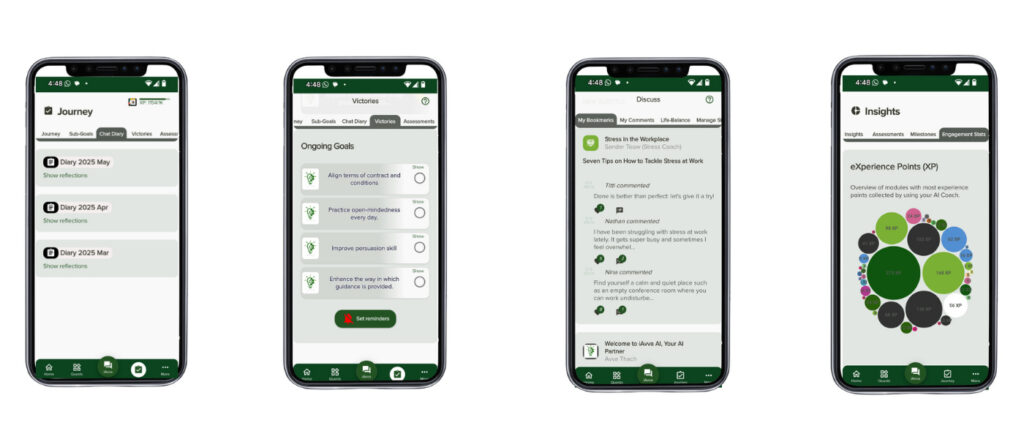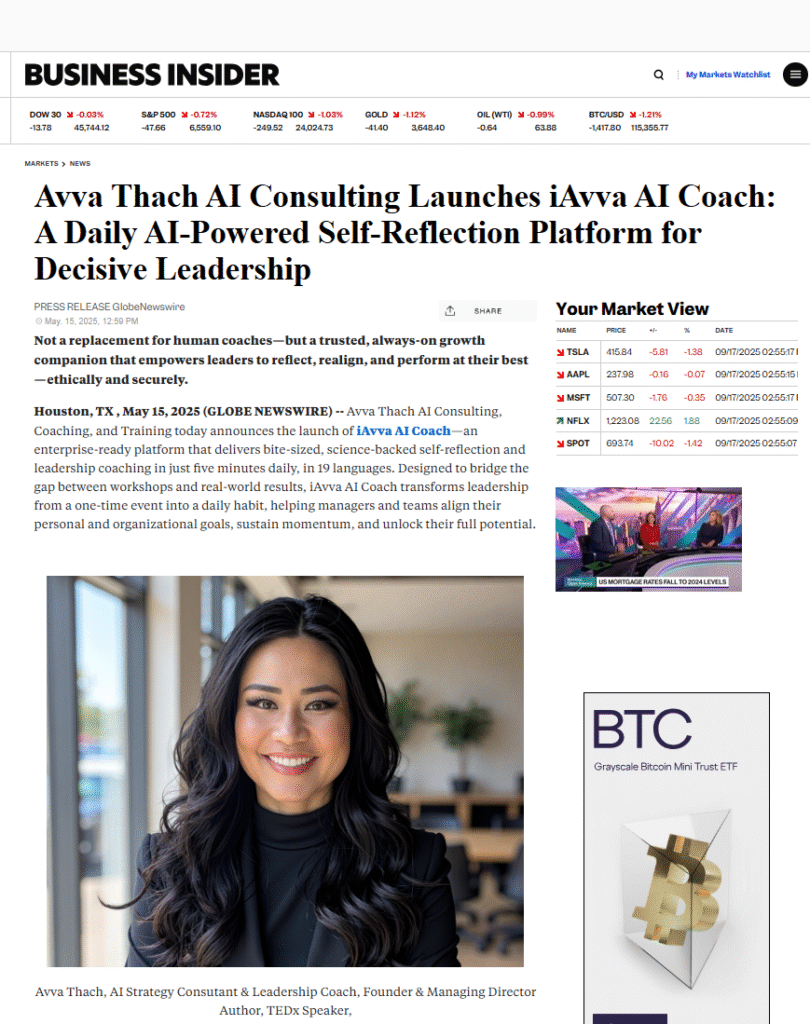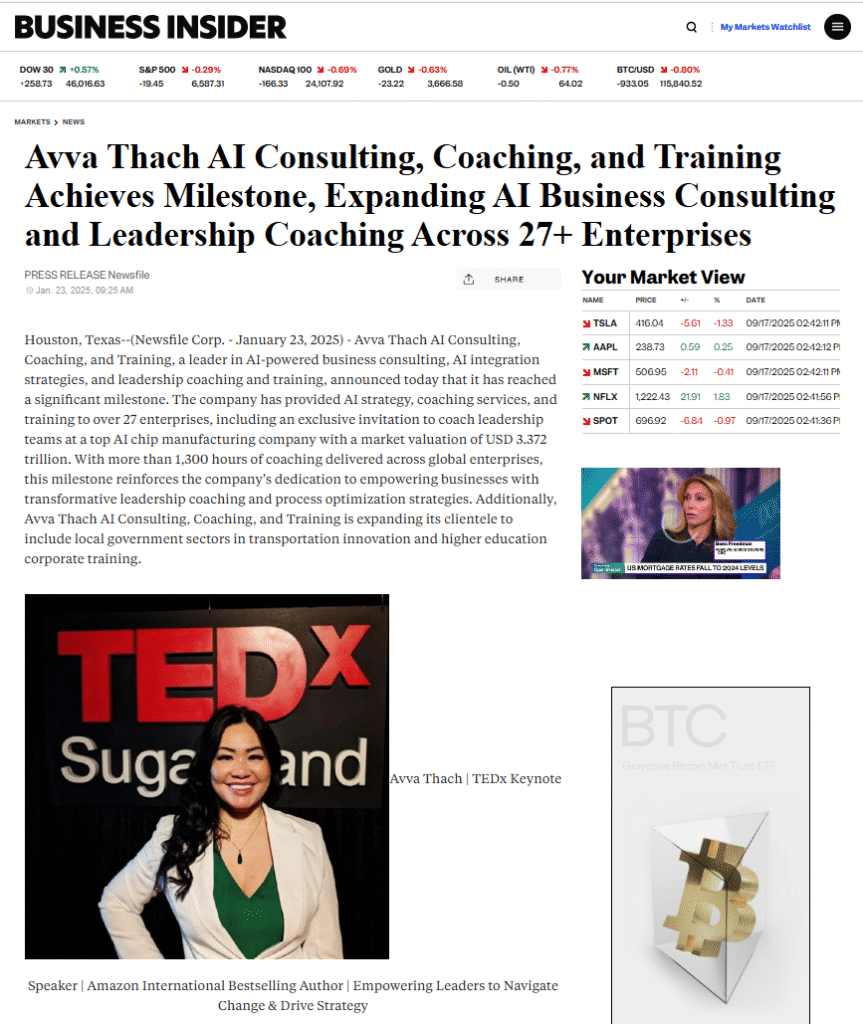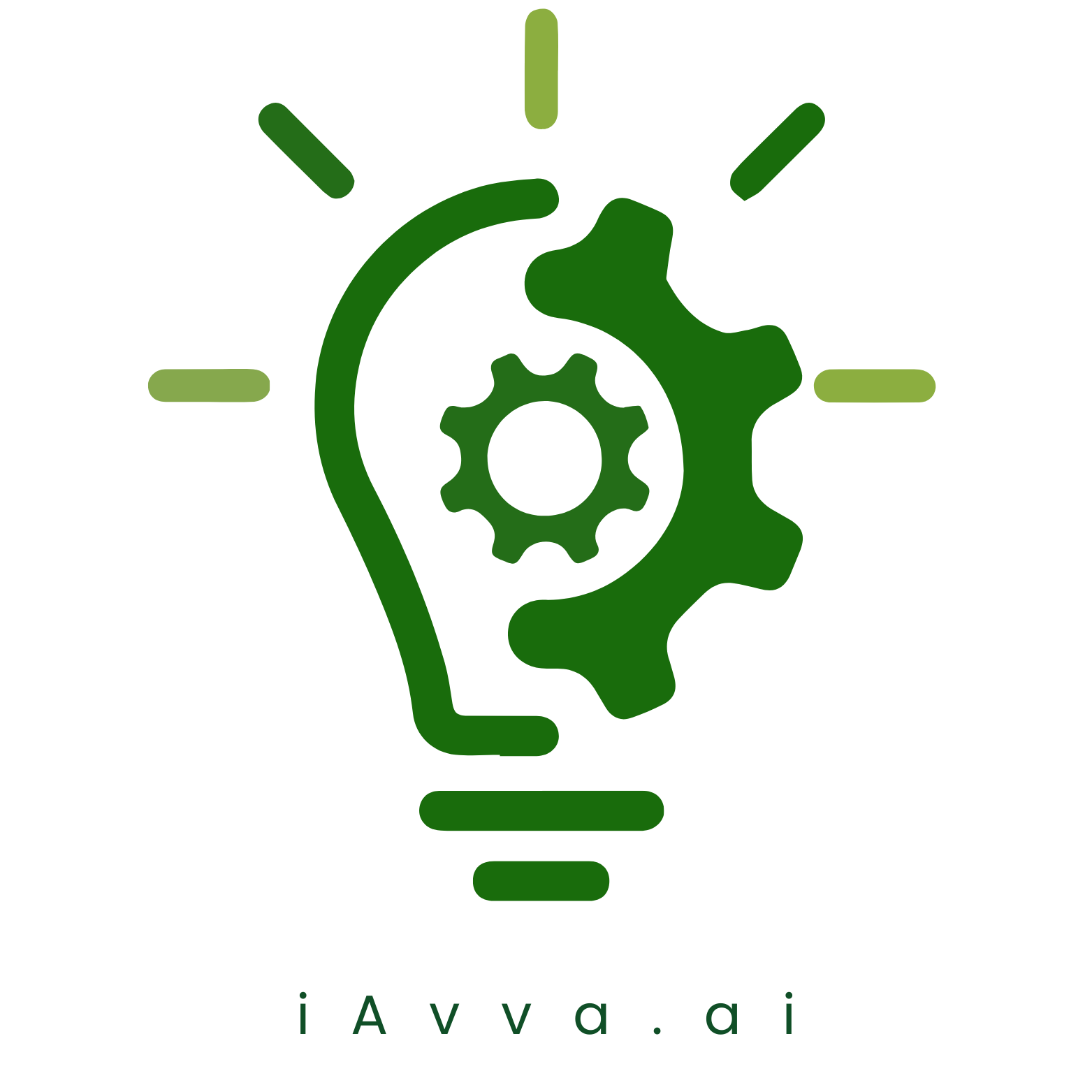10 Proven AI Strategies to Transform Your Business Growth
Introduction
Brace yourself: AI is not just a trend; it’s a revolution. By 2030, it’s predicted that artificial intelligence will contribute a staggering $15.7 trillion to the global economy. Yes, you read that right-trillion with a ‘T’! (source: PwC) If your business isn’t leveraging an effective AI strategy, you’re essentially standing still while everyone else zooms past.
Let’s face it, navigating the complexities of AI can feel like trying to solve a Rubik’s Cube blindfolded. Many companies grapple with aligning their goals with the right technology, leading to missed opportunities and wasted resources. It’s no wonder that 75% of organizations believe effective training and coaching are essential for successful digital transformation (source: PwC). Without an actionable AI implementation plan, businesses can easily find themselves lost in the digital wilderness.
To truly capitalize on AI’s potential, businesses must develop a robust AI transformation plan that aligns with their unique objectives. This isn’t just about adopting shiny new tools; it’s about integrating AI into the very fabric of your corporate strategy.
Consider this: companies that effectively leverage AI can enhance operational efficiency by up to 40%. That’s not just a number; that’s real growth potential waiting to be tapped. The strategic use of AI isn’t merely about automation; it’s about driving innovation and gaining a competitive edge in your industry.
As we explore the landscape of AI strategies in this blog post, you’ll discover how integrating machine learning into your operations can optimize processes and transform customer experiences. From predictive analytics to personalized marketing campaigns, these strategies are not just theoretical-they’re actionable steps you can take today.
The interesting part? Many businesses still cling to outdated practices or hesitate due to fear of complexity. But here’s the kicker: those who embrace change are the ones who thrive. So buckle up as we delve into ten proven AI strategies designed to transform your business growth!
Understanding AI Strategies
Here’s a shocking truth: only 10% of organizations have a comprehensive AI strategy. That means 90% are either winging it or stuck in the past, which could cost them dearly as the digital landscape evolves. If you’re part of that 90%, it’s time to rethink your approach! (source: Gartner)
Many businesses dive into AI without a clear AI implementation plan, leading to mismatched expectations and underwhelming results. Imagine investing in a high-tech espresso machine but only brewing instant coffee. That’s essentially what happens when you don’t align your business goals with an effective artificial intelligence strategy.
A well-defined AI strategy framework can serve as your roadmap, guiding you through the complexities of integrating AI into your operations. It’s not merely about adopting technology; it’s about crafting a tailored plan that addresses unique business challenges.
Key Components of Successful AI Strategies
So, what does a successful AI strategy look like? Here are some essential components:
- Clear Objectives: Define what you want to achieve with AI-whether it’s improving customer service, streamlining operations, or enhancing decision-making.
- Data Governance: Establish robust data management practices. Quality data is the lifeblood of any AI initiative.
- Cross-Functional Collaboration: Involve various departments in the planning process to ensure alignment and buy-in across the organization.
- Iterative Approach: Embrace an agile methodology that allows for continuous learning and adaptation as you implement AI solutions.
- Ethical Considerations: Formulate an ethical policy around AI use to address concerns related to bias and privacy.
The interesting part? Many companies overlook the importance of cross-functional collaboration. When departments operate in silos, they miss out on valuable insights that could enhance their AI initiatives. Think of it like assembling a jigsaw puzzle-without all the pieces, the picture remains incomplete.
Common Misconceptions about AI Implementation
Misinformation can be a significant barrier when formulating an AI business strategy. Here are some myths that need busting:
- AI is Only for Big Companies: Small and midsize businesses can leverage affordable cloud-based AI solutions to compete effectively.
- You Need Extensive Technical Knowledge: While understanding basic concepts helps, many user-friendly tools simplify deployment for non-techies.
- AIs Are Self-Sufficient: Continuous human oversight is necessary for effective monitoring and adjustment of AI systems.
- You Can Implement AI Overnight: Successful integration takes time; rushing can lead to costly mistakes and misalignment with business objectives.
The reality is straightforward: developing an enterprise AI strategy requires thoughtful planning and execution. It’s not just about technology; it’s about transforming how your organization operates at its core.
If you’re still hesitant about diving into this transformative wave, consider this: by 2025, it’s estimated that AI-driven businesses could increase global GDP by up to 14%. This isn’t just hype-it’s a call to action for those ready to embrace change! (source: Accenture)
Your next step? Start formulating an actionable AI transformation plan. Align your goals with strategic use cases for AI within your organization. Remember, those who adapt will thrive while others lag behind!
10 Proven AI Strategies to Transform Your Business Growth
Ready for a game-changer? Businesses that deploy AI effectively can boost their productivity by up to 40%. That’s not just a catchy stat; it’s the reality of the AI landscape today. If your organization isn’t on board, you might as well be using a flip phone in a smartphone world.
Many companies are stuck in the mud, unsure how to leverage AI for growth. They often underestimate the potential of an AI strategy, leading to missed opportunities and wasted budgets. It’s like trying to run a marathon in flip-flops-painful and inefficient. The truth is, developing an actionable AI implementation plan can set you on a path toward innovation and efficiency that was previously unimaginable.
To thrive in this new era, businesses must embrace a comprehensive AI transformation plan. This involves not just technology adoption but also aligning AI initiatives with overarching business objectives.
Let’s break down ten proven strategies that can help you harness the power of artificial intelligence and supercharge your growth:
Strategy 1: Data-Driven Decision Making
The backbone of any successful AI strategy is data. By implementing robust data analytics tools, organizations can make informed decisions based on real-time insights rather than gut feelings. For instance, Netflix uses viewing data to recommend shows, keeping users engaged longer. Imagine applying that level of insight across your operations!
Strategy 2: Automating Routine Tasks for Efficiency
Why waste time on repetitive tasks when AI can handle them? Automating routine processes frees up valuable human resources for strategic work. Think about how chatbots can manage customer inquiries around the clock-your team can focus on more complex issues while customers get instant responses.
Strategy 3: Enhancing Customer Experience with AI
The customer experience is paramount, and leveraging AI tools like personalized recommendations can elevate it significantly. Companies like Amazon have mastered this by analyzing purchasing patterns to suggest products tailored just for you-talk about shopping made easy!
Strategy 4: Predictive Analytics for Market Trends
The future isn’t as murky as it seems! With predictive analytics, businesses can forecast market trends and consumer behavior patterns with remarkable accuracy. This proactive approach allows organizations to stay ahead of competitors by adapting their strategies before trends hit.
Strategy 5: Personalization through Machine Learning
A machine learning strategy focused on personalization can transform marketing efforts into targeted campaigns that resonate with individual customers. Take Spotify’s Discover Weekly playlist-a perfect example of how tailored experiences keep users coming back for more.
Strategy 6: Leveraging Natural Language Processing for Insights
NLP tools allow businesses to analyze customer feedback from various platforms effortlessly. By understanding sentiment around your brand or products, you can make adjustments that directly address customer needs-it’s like having a focus group at your fingertips!
Strategy 7: Integrating AI with Existing Systems and Processes
A seamless integration of AI into existing workflows is crucial for maximizing benefits. Companies need to ensure their systems communicate effectively; otherwise, it’s akin to trying to fit a square peg into a round hole-frustrating and inefficient.
Strategy 8: Continuous Learning and Adaptation in AI Models
The digital landscape evolves rapidly, so should your AI models! Implementing continuous learning mechanisms ensures that your systems adapt based on new data inputs and changing market dynamics-keeping you relevant in an ever-shifting environment.
Strategy 9: Building a Culture of Innovation with AI Tools
Cultivating an innovative mindset within teams encourages creative solutions powered by AI technologies. Encourage experimentation with new tools; after all, innovation thrives when employees feel empowered to explore uncharted territories!
Strategy 10: Measuring Success and ROI of AI Initiatives
No strategy is complete without measuring its success! Establish KPIs specific to your AI business strategy. Regularly assess performance metrics related to efficiency gains or revenue increases attributable to your initiatives-it’s the only way to ensure you’re getting bang for your buck!
The takeaway? Embracing these actionable AI strategies will not only streamline operations but also drive measurable growth in ways you’ve only dreamed about before. Start implementing these today, because in the world of business transformation through AI, those who act fast will reap the most rewards!
The Role of Leadership in Implementing AI Strategies
Here’s a fun fact: 68% of leaders recognize that integrating AI strategies with leadership coaching significantly boosts the effectiveness of their transformation efforts (source: Harvard Business Review). If you think you can just toss AI tools into the mix and expect magic, think again! Leadership isn’t just about making decisions; it’s about steering the ship through uncharted waters.
Consider a real-world example: when a major retail chain decided to implement an AI-driven inventory management system, they faced resistance from employees who feared job loss. Instead of pushing through with a top-down approach, their leadership team initiated open dialogues, addressing concerns and highlighting how AI would enhance-not replace-their roles. Result? A smoother transition and a 30% increase in operational efficiency within six months.
The crux of successful AI implementation lies in strong leadership. Leaders must not only champion AI initiatives but also cultivate an environment where innovation can thrive. This involves aligning business goals with technological advancements while ensuring teams feel empowered rather than threatened.
The Importance of Vision and Direction from Leadership
Vision is the North Star for any organization navigating the complexities of an AI strategy. Without clear direction, teams can flounder like fish out of water. Leaders need to articulate how AI aligns with the company’s objectives-think of it as drawing the roadmap for a cross-country road trip. If your destination is unclear, you’re likely to end up lost somewhere in Nebraska.
- Set Clear Goals: Specify what success looks like with your AI initiatives-whether it’s improving customer satisfaction or reducing operational costs.
- Communicate Effectively: Keep lines open between leadership and teams. Regular updates on progress and challenges foster transparency.
- Lead by Example: Embrace technology yourself! When leaders actively engage with AI tools, it inspires confidence across all levels.
Cultivating an Agile Mindset within Teams
If you want to see real change, team culture has to shift towards agility and adaptability. Rigid structures can stifle innovation faster than you can say “machine learning.” Leaders should encourage experimentation and iterative processes-after all, even the best algorithms need fine-tuning!
- Encourage Experimentation: Allow teams to test new ideas without fear of failure. Remember, every misstep is an opportunity for learning!
- Promote Cross-Functional Collaboration: Break down silos by encouraging diverse teams to work together on AI projects. Different perspectives lead to richer solutions.
- Invest in Training: Equip your workforce with the necessary skills through tailored training programs focused on both technical knowledge and soft skills.
The Impact of Leadership Coaching on Successful Implementation
A little coaching goes a long way! When leaders receive guidance on how to implement AI strategies, they become better equipped to navigate challenges that arise during deployment. Think of it as having a GPS for your journey toward digital transformation-much more reliable than guessing which way to turn!
A study found that organizations with leadership coaching saw a 25% improvement in employee engagement scores during their digital transformation efforts (source: PwC). Engaged employees are more likely to embrace change, making them invaluable allies in your quest for successful AI integration.
The takeaway? Strong leadership is vital for implementing effective AI strategies. By fostering an agile mindset, setting clear goals, and investing in coaching, organizations can ensure smoother transitions into their digital futures while maximizing the benefits of artificial intelligence.
Training and Development for Effective AI Integration
Here’s a reality check: 75% of companies believe that effective training and coaching are essential for successful digital transformation (source: PwC). If your organization is not investing in training for AI integration, you might as well be throwing your money into a black hole. The truth? Without the right skills, even the most sophisticated AI tools will gather dust like an unused treadmill in the corner of a gym.
Consider this scenario: a mid-sized tech firm decided to implement an advanced machine learning model to enhance customer service. They had the software, they had the data, but they didn’t invest in training their staff on how to leverage these tools effectively. The result? A clunky implementation that frustrated employees and customers alike. It’s like giving someone a Ferrari without teaching them how to drive-it’s just going to sit in the driveway.
To truly harness the power of AI, businesses must prioritize tailored training programs that equip their workforce with the necessary skills and knowledge. This isn’t just about understanding technology; it’s about fostering a culture of continuous learning that adapts as quickly as AI evolves.
The Need for Continuous Learning in Technology Adoption
The digital landscape is like quicksand; if you don’t keep moving forward, you’ll sink fast. Continuous learning isn’t just a nice-to-have; it’s a survival skill in today’s tech-driven world. As AI technologies evolve at breakneck speed, so too must your workforce’s capabilities. Regular upskilling ensures that employees remain relevant and can effectively utilize new tools as they emerge.
- Regular Workshops: Host ongoing sessions focusing on new AI tools or updates to existing systems. Think of it as tech boot camp-no one wants to be left behind!
- Mentorship Programs: Pair seasoned employees with those new to AI to foster knowledge sharing and collaboration.
- E-Learning Platforms: Invest in online courses tailored specifically for your industry-because who doesn’t love learning from home while wearing pajamas?
The interesting part? Many organizations overlook this aspect entirely, assuming that initial training is sufficient. But just like software updates, skills need refreshing too! For instance, companies utilizing cloud-based AI solutions must ensure their teams are well-versed in security protocols and data management practices-otherwise, they might find themselves facing compliance issues faster than you can say “data breach.”
Tailored Training Programs for Workforce Development
Your workforce is your greatest asset-treat them as such! Tailored training programs should address specific needs within your organization rather than relying on generic courses that may not resonate with your team members. Customization ensures relevance and engagement.
- Assess Skill Gaps: Conduct assessments to identify where employees need support or further development-this will help tailor your training initiatives effectively.
- Create Role-Specific Training: Different roles require different skills-ensure that training programs reflect this diversity!
- Incorporate Hands-On Learning: Encourage practical applications through real-world projects or simulations so employees can see immediate benefits from their learning efforts.
The twist? Investing in employee development isn’t merely altruistic; it’s strategic! Companies that prioritize training see reduced turnover rates and higher employee satisfaction scores-not to mention improved performance metrics tied directly back to their AI strategy framework.
The takeaway here? Prioritizing training and development is crucial for successful AI integration within your organization. By fostering continuous learning and tailoring programs to meet specific needs, you not only empower your workforce but also position your business for sustainable growth in an increasingly competitive landscape. Ready to get started?
Cultural Considerations in Adopting AI Strategies
Here’s a reality check: over 70% of AI projects fail due to cultural misalignment (source: Forbes). If your organization thinks it can just slap on some shiny AI tools without addressing the underlying culture, you might as well be pouring money down a black hole. Culture eats strategy for breakfast, and in the world of artificial intelligence, this adage rings truer than ever.
Many companies dive headfirst into AI adoption, only to find their employees resistant or confused. Picture this: a company rolls out an advanced machine learning model intended to enhance customer service but fails to communicate its purpose or benefits. Employees feel threatened rather than empowered, and the whole initiative flops. It’s like trying to introduce a new flavor of ice cream without letting anyone taste it first-no one is going to buy it!
To successfully implement an AI strategy, organizations must focus on cultural alignment. This means fostering an environment where innovation is celebrated, and employees feel secure in their roles as technology evolves. It’s not just about the tech; it’s about how people interact with it.
Understanding Organizational Culture’s Role in AI Adoption
Culture isn’t just some fluffy concept; it’s the backbone of successful AI integration. Businesses need to assess their current culture and identify any barriers that could hinder progress. Here are some key areas to consider:
- Openness to Change: Organizations that embrace change are more likely to succeed with AI initiatives. If your team clings to old ways of working, they will resist new technologies.
- Collaboration Across Departments: Siloed departments can stifle innovation and slow down implementation. Cross-functional teams can drive creativity and ensure diverse perspectives are included in decision-making.
- Leadership Support: Leaders should champion AI initiatives, demonstrating commitment through active participation and communication about benefits and progress.
- Training Mindset: A culture that prioritizes continuous learning will adapt more easily to new technologies. Employees should feel encouraged to upskill rather than intimidated by the prospect of change.
The twist? Many organizations underestimate how deeply ingrained cultural issues can sabotage even the best-laid plans for AI integration. Ignoring these factors is like trying to run a marathon with one shoe-it simply doesn’t work!
Navigating Resistance and Fear
The fear factor plays a significant role in cultural resistance against adopting new technologies like AI. Employees often worry about job security or feel overwhelmed by unfamiliar tools. Addressing these fears head-on is crucial for successful implementation:
- Transparent Communication: Regularly share updates on what AI initiatives mean for employees’ roles. Transparency builds trust and reduces anxiety around job displacement.
- Highlight Success Stories: Showcase examples from within your organization or industry where AI has enhanced roles rather than replaced them-think of it as showing off that delicious new ice cream flavor!
- Create Feedback Loops: Establish channels for employees to voice concerns or suggestions regarding AI initiatives, ensuring they feel heard and valued throughout the process.
The bottom line? Overcoming resistance requires intentional efforts from leadership combined with strong communication strategies that emphasize collaboration and support throughout every phase of implementation.
The Importance of Inclusivity in Developing an AI Strategy
Diversity isn’t just a buzzword; it’s essential for innovation in AI development! Including varied perspectives during strategy formulation leads to more robust solutions that cater to different customer needs. Companies should actively seek input from diverse teams when developing their AI business strategy.
- Diverse Hiring Practices: Ensure your recruitment strategies attract candidates from different backgrounds-this diversity will enrich discussions around potential uses for AI within your organization.
- Cross-Departmental Workshops: Encourage collaboration by hosting workshops where various departments brainstorm together on how best to leverage AI tools effectively across functions.
- User-Centric Design Thinking: Involve end-users early in the development process so solutions reflect actual needs rather than assumptions made by those far removed from day-to-day operations.
Your next step? Assess your organizational culture today! Identify any barriers preventing successful adoption of an AI implementation plan. By addressing these challenges head-on, you’ll set your business up for sustainable growth while maximizing the benefits derived from artificial intelligence strategies!













Leave a Reply